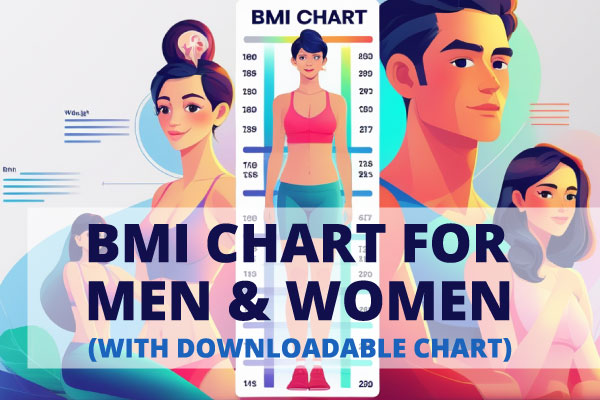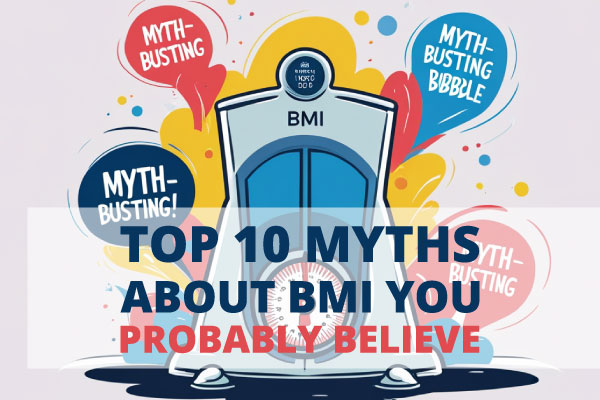BMI Chart for Men & Women (with Downloadable Chart)
BMI Chart for Men & Women (with Downloadable Chart)
Understanding your Body Mass Index (BMI) is essential for maintaining a healthy lifestyle. Whether you’re aiming to lose weight, build muscle, or simply stay in shape, knowing your BMI helps you set realistic health goals. In this guide, we provide a clear and easy-to-read BMI chart for men and women, explain how to use it effectively, and offer a free downloadable version for your convenience.
📌 What is BMI?
Body Mass Index (BMI) is a simple numerical calculation used to assess whether a person has a healthy body weight for their height. It is calculated by dividing a person’s weight in kilograms by their height in meters squared. Although it doesn’t directly measure body fat, it provides a useful screening tool to categorize individuals as underweight, normal weight, overweight, or obese.
👉 If you want to calculate your BMI instantly, try our free tool here:
Calculate BMI online.
📊 BMI Chart for Men & Women
The BMI chart below is applicable to both men and women (aged 18+). It provides a quick way to see where you fall within the BMI categories based on your height and weight.
| BMI Range | Category | Health Risk |
|---|---|---|
| Below 18.5 | Underweight | Increased health risk |
| 18.5 – 24.9 | Normal weight | Low risk (healthy range) |
| 25.0 – 29.9 | Overweight | Moderate risk |
| 30.0 and above | Obese | High risk |
You can also download a printable BMI chart to keep at home, in your gym, or workplace:
👩⚕️ Why BMI Matters for Men and Women
While the BMI formula is the same for men and women, the interpretation can differ slightly depending on body composition. Men typically have more muscle mass, while women tend to have a higher percentage of body fat. This means two people with the same BMI might have different body fat levels. Still, BMI remains a useful health indicator and is widely recommended by the World Health Organization (WHO).
🧠 Factors That Can Influence BMI Interpretation
- Age: Older adults may have more body fat even if their BMI is within a normal range.
- Gender: Women usually have more body fat than men at the same BMI.
- Muscle Mass: Athletes and muscular individuals might have a high BMI despite low body fat.
- Ethnicity: Some populations may face health risks at lower BMI thresholds.
To get a more accurate understanding of your healthy BMI range based on age and gender, check out this detailed guide:
Normal BMI Range by Age and Gender: What You Need to Know
.
💡 How to Use the BMI Chart
- Find your height on the vertical axis of the chart.
- Locate your weight on the horizontal axis.
- Trace the row and column to find your BMI number.
- Compare your BMI with the chart categories to determine your health range.
⚠️ Limitations of BMI
BMI is a useful screening tool but not a diagnostic measure. It does not consider factors such as muscle mass, bone density, or fat distribution. For a more comprehensive health assessment, it’s best to consult a medical professional and consider additional measures such as waist-to-hip ratio or body fat percentage.
✅ Key Takeaways
- BMI is a quick and simple way to assess your weight category.
- The same chart applies to both men and women but may be interpreted differently based on individual factors.
- You can download and use a BMI chart for easy tracking at home.
- For personalized health advice, consult your doctor.
❓ Frequently Asked Questions (FAQ)
1. What is a healthy BMI for men?
For most adult men, a BMI between 18.5 and 24.9 is considered healthy. However, muscle mass can affect BMI readings, so athletes might fall into higher categories without having excess body fat.
2. What is a healthy BMI for women?
For adult women, the healthy BMI range is also 18.5 to 24.9. However, women naturally have higher body fat percentages than men, so other measures like waist circumference can give additional insights.
3. Can I use the same BMI chart for both men and women?
Yes. The BMI calculation and categories are the same for both genders, though interpretations may vary slightly due to body composition differences.
4. Where can I download a BMI chart?
You can download a printable BMI chart from this page. Simply click the download button above to save a PDF version.
5. Is BMI accurate for everyone?
BMI is a general guideline and may not be accurate for athletes, pregnant women, or people with high muscle mass. It’s best used alongside other health assessments.






